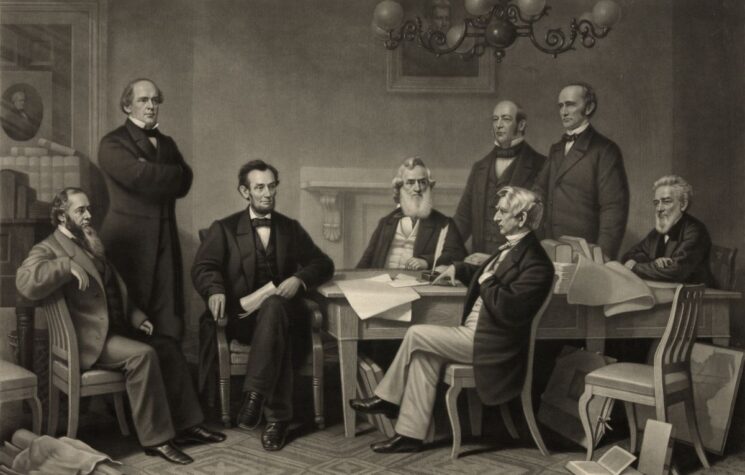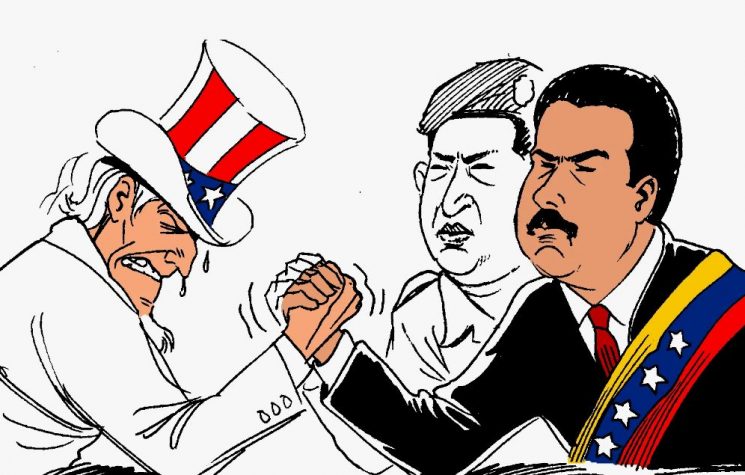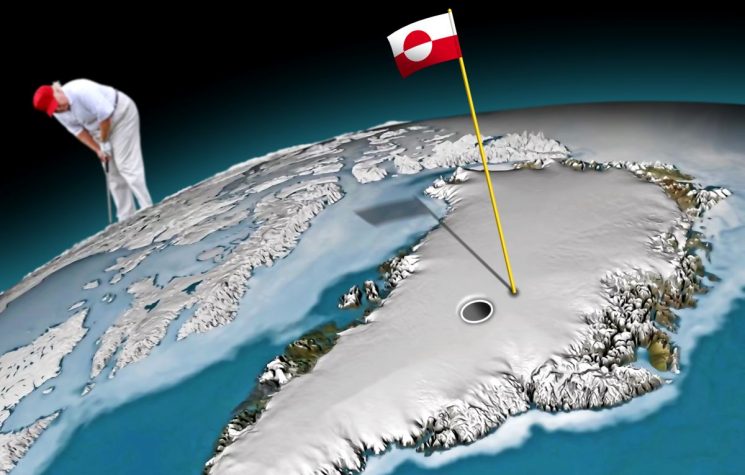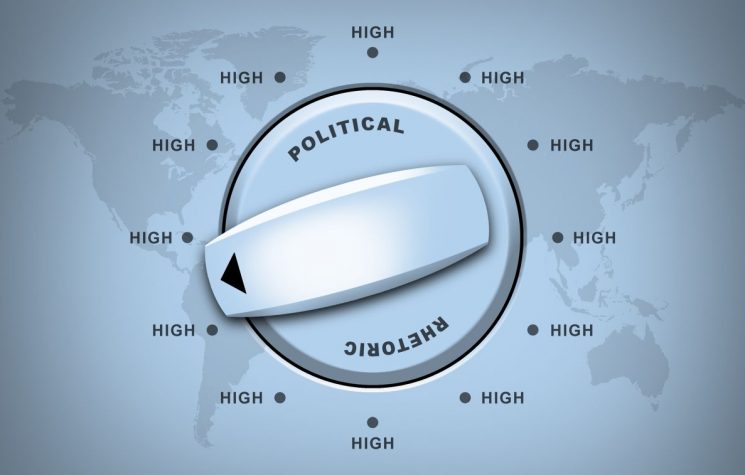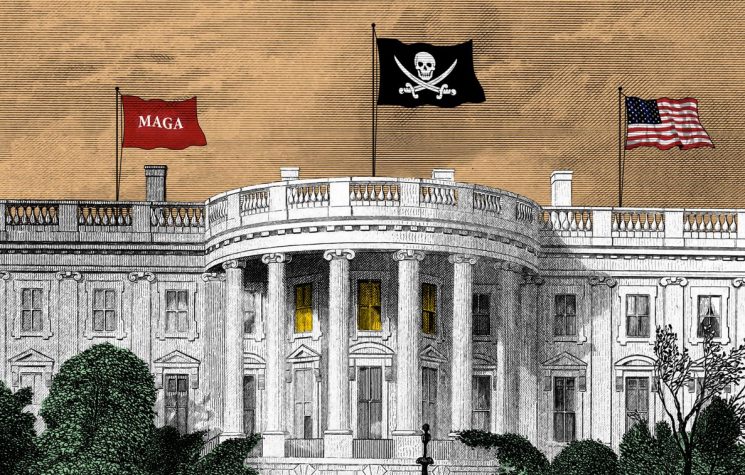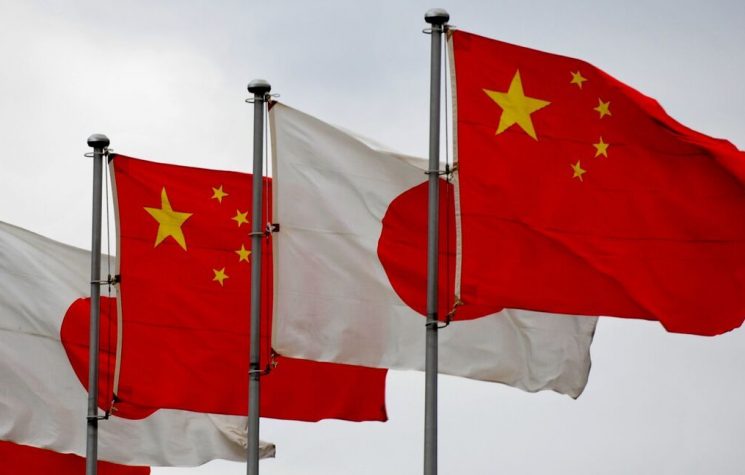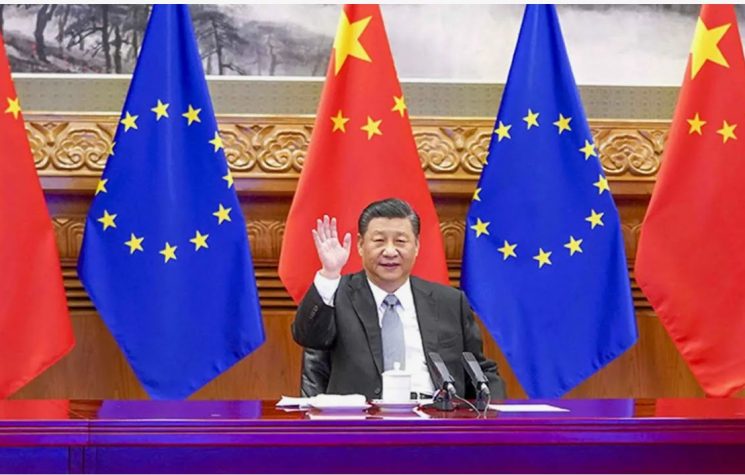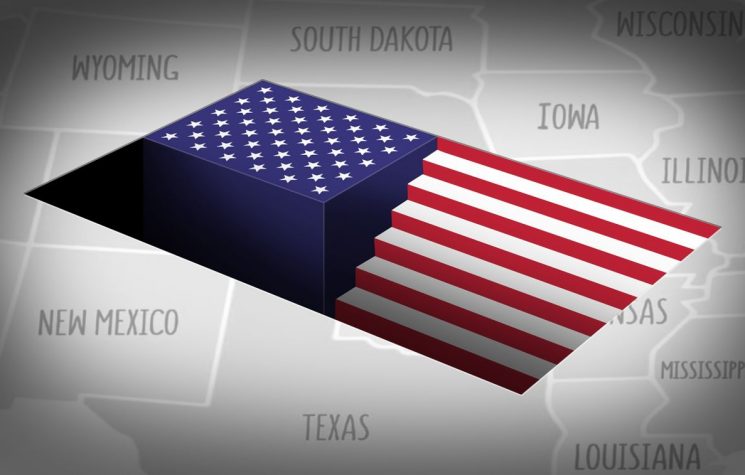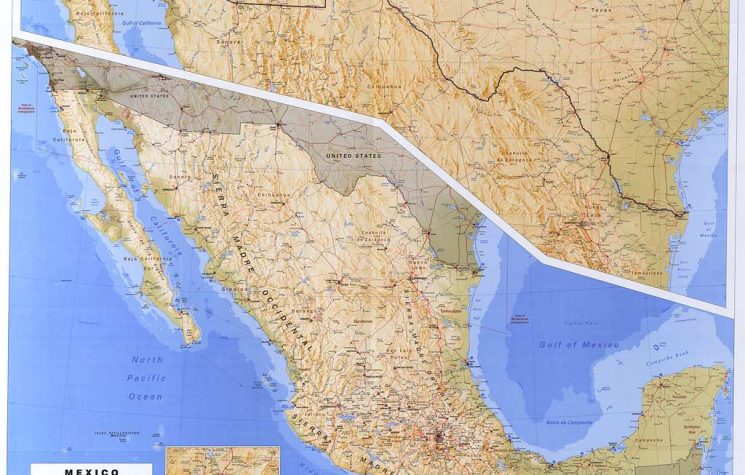If the west is able to discover the moral fitness to survive at this late stage of decay, it will be due to our rediscovery of this lost heritage and recognize its living expression in the Russian-Chinese alliance today.
In my last essay, I made the case that a specifically Eurasian expression of Manifest Destiny has emerged in recent years sharing many important parallels with the original Manifest Destiny often associated with 19th century America, but with one big difference. Unlike the earlier U.S. variant, the current Eurasian version is not being used as a big stick to smash small nations and minority groups into obedience to an elitist master class.
Despite the many abuses committed by U.S. devotees of “Manifest Destiny”, one might be surprised to discover that it is not entirely evil. This better tradition has sadly been scrubbed out of history books which have been framed to present an over-simplified narrative that asserts either 1) “all American expansion was good”, or 2) “America is just shaped by evil white males destroying minorities, raping pristine nature and pushing slavery”.
If you are surprised by my proposition that something positive actually existed beyond these two wrong extremes, then I’m sorry to say, you’ve been fed a bad batch of either romanticism, or Critical Theory Kool Aid and this article is for you. By reading onward, I promise that you will be able to appreciate the historical forces active behind both China and Russia’s long term strategic thinking and maybe something good embedded within the USA itself that you didn’t realize existed.
The 1890 Cosmopolitan Railway: Master key to Universal History
Let us start with an 1890 map commissioned by an American statesman named William Gilpin (titled “Gilpin’s American Economic, Just and Correct Map of the World”) and featured in his 1890 Magnum Opus‘The Cosmopolitan Railway” (subtitle: compacting and fusing together all the world’s continents).

Several peculiar things pop out upon looking at this map:
1) It is among the earliest American-made maps featuring a Pacific-centric focus rather than the typical Atlantic perspective.
2) It features the growth of railways across every continent including the closing of the Darian Gap uniting North and South America, east-west rail from China to Europe and extensions across Southwest Asia and into Africa via Egypt.
3) It centers around a keystone extension rail connecting Eurasia with the USA via the Bering Strait.
This map, and associated book have been known by many for a long time. Many look at it, murmur “interesting idea” and then turn their brains off.
The inquiring mind should instead be provoked to ask: IS there a story here? Was this Gilpin guy some lone eccentric envisioning a fantasy world completely disconnected from reality? Or was there an international geopolitical process underway that he was an integral part of?
In order to address this question, let’s start by asking: Who was William Gilpin anyway?
William Gilpin: American Patriot and Sinophile
Born into a leading American political family in 1813, William Gilpin became known during his adult life as the “Prophet of Manifest Destiny” serving as state representative, spy, bodyguard to Lincoln, industrialist, and Governor of Colorado. America changed a lot during its early years growing from 13 states to 45 by 1900 (sometimes legitimately and sometimes illegitimacy).
Through out this period, there was a raging fight over what identity would shape the young republic? Would it devolve into racism, slavery and empire, or would it endure and develop according to the ideals laid out in its founding documents?

The USA that existed when Gilpin was born looks very different from the USA of today
As we will come to see, Gilpin’s life was dedicated to the latter. Starting in 1843, Gilpin devoted himself fully to building the world’s first trans continental railway uniting for the first time an entire continent by rail.
Having drafted a 1949 resolution in Missouri conference devoted to the Trans Continental Railway, Gilpin wrote: “Let it be resolved that, whereas the Almighty has placed the territories of the American Union in the center between Asia and Europe and the Route of the Asiatic and European Railway” through the heart of our national domain, it is our duty to the human family to prosecute, vigorously, through its new channel, that supreme commerce between the oriental nations and the nations of the Atlantic, which history proves to have existed in all ages, and to be necessary to keep alive comity, science and civilisation among mankind”.

Watching the decay of the minds and morals of the U.S. population and political establishment then firmly underway, Gilpin explained to German publisher Julius Frobel in 1852 why he believed it necessary to unite Chinese and American cultures into a new synthesis in order to save the nation:
“Salvation must come to America from China, and this consists in the introduction of the “Chinese constitution” viz. the “patriarchal democracy of the Celestial Empire”. The political life of the United States is “through European influences”, in a state of complete demoralization, and the Chinese Constitution alone contains elements of regeneration. For this reason, a railroad to the Pacific is of such vast importance, since by its means the Chinese trade will be conducted straight across the North American continent. This trade must bring in its train Chinese civilization. All that is usually alleged against China is mere calumny spread purposefully, just like those calumnies which are circulated in Europe about the United States”.
Speaking in 1856, Gilpin advanced this idea of a paradigm shift saying that America must: “disinfect ourselves of inane nepotism to Europe in other things as we have done in politics; to ponder boldly on ourselves and our mission, and develop an indigenous dignity- to appreciate Asiatic sciences, civilization, commerce and population- these are essential preparatory steps to which we must tune our minds.”
Gilpin and his World
Among the earliest of Gilpin’s childhood memories was an aging Marquis de Lafayette coming to his home to celebrate the anniversary of the Brandywine Battle victory during the Revolutionary War. During this decisive battle, the Gilpin home served as Lafayette’s headquarters, and Gilpin’s grandfather Thomas was a close collaborator of both Ben Franklin and the French General. Both Gilpin’s father and grandfather were members of Benjamin Franklin’s Philosophical Society and worked closely with the Hamiltonian National Bank where the Gilpins were in charge of constructing one of the largest infrastructure projects in U.S. history: The Chesapeake-Delaware Canal.

Before his 1804 murder at the hands of Aaron Burr, Alexander Hamilton (founder of the National Bank) had innovated a new form of political economy tied to large scale national credit generation via a nationally-directed banking system, internal improvements, and protective tariffs/bounties. This system of political economy was dubbed “The American System” by German Economist Friedrich List in 1827 and was used successfully to transform the republic from an underdeveloped bankrupt agrarian society in 1783 to an industrially advanced nation outperforming much of Great Britain within 40 years. Large scale projects like the Erie Canal, Chesapeake-Delaware Canal and a growing network of railways was instrumental in this process.

When Hamilton’s Bank was killed by Andrew Jackson (not coincidentally a leading figure in Aaron Burr’s political machine) in 1836, the most important instrument to direct national development was destroyed. National projects were cancelled, economic systems deregulated in favor of money worshipping British Free Trade, and unbounded speculation resulted in chaotic boom/bust cycles starting with the Bank Panic of 1837. Local banks were empowered to print their own currencies and soon over a thousand different notes sent the divided nation into chaos.
The 19th Century Deep State
Under Jackson, the Anglo-American deep state consolidated its power, genocidal programs were launched against natives, and influxes of black slavery grew from two million in 1830 to four million by 1860. With fertile southern soils cleansed of natives, the Slavocracy increased its cotton output becoming among the richest regions on earth with London purchasing over 80% of the south’s output.
By 1860, Britain had acquired a near monopoly on textile production, having destroyed India’s sovereign industries and forcing that once proud nation into producing opium as it’s primary export product. This soul-killing drug was then infused (via British free trade) into the heart of China which suffered crushing defeats when it tried to block the poisoning of its citizens in 1840 and again in 1859.
The Anglo American deep state grew immensely in power leading towards the near break up of the young republic into “free” vs “slave” confederacies… which had been the objective since 1800 when Aaron Burr first attempted it.
The Transformative Power of Rail Development
Despite having lost the national bank, a general orientation towards scientific and technological optimism still animated the American character. The first passenger and freight railway was built in 1827 (the Baltimore and Ohio Railway) and soon rail extensions began moving across the daunting Appalachian mountains. By 1840, over 2800 miles of rail had been laid, growing to 9021 miles in 1850. By 1860 that number had grown to 30,000 miles but a new quantum leap was effected by Lincoln’s decision to devote considerable resources during the height of the Civil War towards the construction of the Trans Continental Railway (built between 1863-1869). With the completion of this project, and the resolution of the Civil War (largely through the intervention of the Russians), rail growth and industrialization exploded. By 1880, over 93,000 miles of rail were laid and when Gilpin published his Cosmopolitan Railway in 1890, the USA had over 163,000 miles of railway while many other nations were experiencing parallel growth through the application of this same model of political economy.

It was in this context that Gilpin became a leading figure of the anti-slavery America, developing a reputation as an Anglophobe suspicious of British Imperial intrigue and working closely with patriots who wished to take back their nation from the clutches of the oligarchical slave power.
For decades, this grouping rallied primarily around the Whig Party of John Quincy Adams and even won two important victories in 1840 and 1850. The first 1840 victory of the nationalists saw President William Harrison take office on the basis of reviving Hamilton’s national bank and re-launching protective tariffs and internal improvements. This was followed by the 1848 victory of Zachary Taylor. Unfortunately, both Whig presidents were poisoned with Harrison only serving three months and dying under mysterious circumstances before the legislation for a Third National Bank (passed by both houses of Congress) could be signed into law. The official cause of Taylor’s 1851 death? Too many cherries and cold milk.
Gilpin soon became an early member of the republican party (founded in 1856 as the anti-slavery party of the USA), where he rose quickly to prominence as one of Lincoln’s team of 11 elite bodyguards who accompanied the newly elected president from Illinois to Washington (narrowly avoiding an assassination attempt along the way).

Lincoln, Carey and the Global Dynamics of the Civil War
Lincoln clearly understood that the USA would not survive as a house divided saying in an 1858 speech:
“Either the opponents of slavery, will arrest the further spread of it, and place it where the public mind shall rest in the belief that it is in the course of ultimate extinction; or its advocates will push it forward, till it shall become alike lawful in all the States, old as well as new, North as well as South.”
Most importantly, Lincoln and his allies understood that this was much more than a domestic issue, but profoundly implicated the course of world civilization and touched upon the nature of empire itself as the basis of international law. In a debate with Judge Stephen Douglas, Lincoln stated:
“That is the issue that will continue in this country when these poor tongues of Judge Douglas and myself shall be silent. It is the eternal struggle between these two principles – right and wrong – throughout the world. They are the two principles that have stood face to face from the beginning of time, and will ever continue to struggle. The one is the common right of humanity and the other the divine right of kings.”
The terms and conditions of the clash of paradigms on a global level was iterated masterfully by a leading Whig economist who soon became a principal economic advisor to Lincoln named Henry C. Carey. In his 1852 Harmony of Interests, Carey stated:
“Two systems are before the world; the one looks to increasing the proportion of persons and of capital engaged in trade and transportation, and therefore to diminishing the proportion engaged in producing commodities with which to trade, with necessarily diminished return to the labor of all; while the other looks to increasing the proportion engaged in the work of production, and diminishing that engaged in trade and transportation, with increased return to all, giving to the laborer good wages, and to the owner of capital good profits… One looks towards universal war; the other towards universal peace. One is the English system; the other we may be proud to call the American system, for it is the only one ever devised the tendency of which was that of elevating while equalizing the condition of man throughout the world.”

Image: Left to right: Alexander Hamilton, Abraham Lincoln and Henry C. Carey
Gilpin and the Greenbacks
In order to do battle with the London-centered financier oligarchy, while simultaneously battling the slave power, Lincoln took control of credit emissions from the private banking cartels by establishing a government-issued “greenbacks”, and “5-20 bonds” starting in 1862. Through these new credit mechanisms directed by national priorities, and a nationally-regulated banking system, Lincoln was able to fund the war and also drive vast development projects like the trans-continental railway.
Before it was launched on a national level, Lincoln’s trusted bodyguard William Gilpin was the first to use this successfully on a state level.
How?
In March 1861, Lincoln appointed Gilpin first governor of the newly formed Colorado Territory on the southwest frontlines of the civil war. During his commission, Gilpin received word that Confederate plans were underway to open up a western front, and was confronted with the dismal fact that financial resources did not exist to organize, train or arm militias to stop this from happening. Before leaving to Colorado, Gilpin’s biographer records the following orders Lincoln gave his lieutenant:
“On finances we have not one cent. I have just negotiated a loan of $50 million from the banks of New York and have called a special session of Congress to meet on the 4th of July to know if they will hang me for this unconstitutional act. If you are driven to extremities, you must do as I have done- issue drafts on your own responsibility”
Gilpin used his authority to issue state-level funds to pay for the militia which made it possible to do battle with the invading confederacy culminating in the Battle of Glorietta Pass in New Mexico in March 1862 which became known as “The Gettysburg of the West”. After putting down this attack, no effort to open a western front was ever to be tried again. Speaking to the Colorado Legislative Assembly in September 1861, Gilpin described his understanding of the strategic importance of Colorado as a bridge not only between oceans but as a gateway to Asia:
“Our territory will be bisected East and West, by the grandest work of all time, constructed to fraternize the domestic relations of our people and to draw the travel and commerce of all the nations, and all the continents of the world.”
The U.S.-Russian Alliance That Changed the Course of History
In the ensuing years, Lincoln’s allies worked closely with their Russian counterparts who helped save the Union in 1863 when Czar Alexander II deployed his navy to Pacific and Atlantic Coasts. These same forces worked together in constructing railways in Russia (with the later Trans Siberian railway built with the help of American engineers and using rail cars made by Baldwin Locomotives from Philadelphia. These would be the same networks that effected the sale of Russian Alaska to the USA in 1867.

Defending the Alaska Purchase in the Congess, Senator Charles Sumner stated: “To unite the East of Asia with the West of America is the aspiration of commerce now as when the English navigator (Meares) recorded his voyage. Of course, whatever helps this result is an advantage. The Pacific railroad is such an advantage; for, though running westward, it will be, when completed, a new highway to the East.”
As the trans-continental railway was being completed, the Alaska purchase was initiated and everyone knew that the continuation of rail from California through British Canada, Alaska and Eurasia was an organic next step.
Gilpin described this program in his 1890 Cosmopolitan Railway saying: “From what has been stated, it is sufficiently apparent that the building of a railroad by way of Alaska, Bering Strait and Northeastern Siberia, connecting with the Canadian Pacific in British Columbia and in Siberia with the Russian line now being pushed forward to Vladivostok, is by no means an impracticable and perhaps not a very difficult undertaking.”
Although Lincoln’s Greenbacks had been destroyed with the 1875 Specie Resumption Act (shackling the U.S. dollars to gold availability), Gilpin fought to revive the American System traditions to fund this new age of global rail development saying “For every dollar that is laid out on railroads, it is estimated that at least ten dollars is added to the sum of human wealth; and that this ratio would be largely increased by completing the chain which needs but a few more links to encircle the globe, is beyond a shadow of a doubt. It would not be a difficult matter for the governments of the United States and Russia to issue say 4-40 bonds and thus settle at once the financial question”.
In both the USA and Russia, this Gilpin’s vision took concrete steps towards realization, first with Edward Harriman’s 1899 expedition to Alaska where plans for an extension of Union Pacific Rail to Russia were charted out. By 1905, as Sergei Witte served as Prime Minister to Czar Nicholas II, a team of American engineers was hired to conduct surveys for the Bering Strait tunnel connection with a March 23, 1906 New York Times headline reading: ‘For Bering Strait Tunnel- Czar Approves Recommendation for All-Rail Route to America’. Sadly, chaotic events of that era derailed this program from unfolding as it should have.
The Strategic Value of Hamiltonian Credit
Gilpin’s reference to “4-40” signified bonds issued with four to forty year maturation and tied directly to the construction of specific megaprojects. This type of productive bond/credit was the essential master key to the success of the Hamiltonian system from its earliest days in 1791 to its renewal under Franklin Roosevelt during the New Deal. Every time this system has been applied, measurable bursts of progress, strengthening of sovereignty, uplifting of citizens and destruction of deep state controls have followed in its wake. Whenever it has been repealed, the opposite has occurred.
Gilpin was extremely direct about this tradition, writing: “No amount of Argument will make America adopt old world theories… To rely upon herself, to develop her own resources, to manufacture everything that can possibly be manufactured within her territory- this is and has been the policy of the United States from the time of Alexander Hamilton to that of Henry Clay and thence to our own days.”
Some might say that Gilpin only wished to advance his rail program in order to make money for investors, but that would be the furthest thing from the truth. A few pages later (in his Cosmopolitan Railway), he wrote: “Let the world but for a day stop its senseless wranglings over political clap-trap, stop its wars and preparations for further human butcheries and devote its intelligence and energy to this works and it is done. It is a small matter how the money is raised; or by whom, so that it is forthcoming; only as before remarked, the work, in my opinion is better in the hands of the nations than under the control of individuals; For all species of tyranny, that which emanates from individuals or corporate power, is the worst.”
Speaking of China, Gilpin stated: “The ancient Asiatic colossus, in a certain sense, needed only to be awakened to new life, and European Culture finds a basis there on which it can build future reforms.”
As Gilpin wrote these words, Russian Finance Minister Sergei Witte, German Chancellor von Bismarck, French Foreign Minister Gabriel Hanotaux and leading industrialists in Japan were working hard to implement the American System in their respective nations as rail lines, productive credit, protectionism, technical education and industrial progress were expanded both within each nation and among themselves.

Despite the assassination of leading statesmen by British directed anarchists between 1865-1905, the orientation towards a new post-imperial society of win-win cooperation moved ever closer to realization.
Lincoln’s Spirit Revived in China
In China, a process was unleashed by a young revolutionary who had been given the opportunity to study in the United States due to the 1868 Seward-Burlingham Treaty that created a short lived ‘special relationship’ between the USA and China. This treaty gave China free emigration and travel in America, reciprocal access to education for citizens living in the others’ country, and favored nation status with the United States. (1)

That young man was recruited to republican networks in the USA and became a devotee of Lincoln’s system of government, which guided his every strategic insight culminating in the 1911 overthrow of the corrupt Qing Dynasty. When he received word of the success of the revolution, Dr. Sun Yat-sen was organizing funding for the Chinese republican cause in the USA (to be specific, in Denver, Colorado). Upon receiving the good news, he immediately returned home to lead the new nation, becoming China’s first President.
It is for this reason that a special 1942 stamp commemorating U.S.-China friendship was first issued in Colorado, featuring portraits of Presidents Sun Yat-sen and Lincoln with the motto “Of the People, By the People, For the People”. The Chinese rendition of this motto was written as “民族, 民權, 民生,” which was made the basis of Sun Yat-sen’s “Three Principles of the People”.

Although foreign intrigues forced him to abdicate the presidency, Dr. Sun Yat-sen remained the moral and strategic force of the Chinese patriots authoring an in-depth program for an industrial renaissance in China tied to a renewal of rail lines, development corridors, energy projects, ports and educational institutions.
Forecasting an interconnected Eurasian railway system and U.S.-Asia alliance, Sun Yat-sen echoed the spirit of Gilpin, famously stating in his 1920 treatise:
“The world has been greatly benefited by the development of America as an industrial and a commercial Nation. So a developed China with her four hundred millions of population, will be another New World in the economic sense. The nations which will take part in this development will reap immense advantages. Furthermore, international cooperation of this kind cannot but help to strengthen the Brotherhood of Man.”

Image: Sun Yat Sen’s rail plans for China published in his 1917 International Development of China called for 10 000 km of rail, 100 000 km of roads, ports, mines and industrial sovereignty. All this was finally accomplished with the advent of Xi Jinping’s age of the Belt and Road – Image EIR
This network of industrial corridors stretched across China, and into India, Southwest Asia, Mongolia, Russia and Europe. Anyone reviewing this grand design today would clearly see the germ seed of the Belt and Road Initiative which has sprung to life since 2013.
In recent years, Russian President Vladimir Putin has made it known to the west his desire to open up the Siberian and Far Eastern zones of Eurasia to large scale development. As early as 2007, Putin began publicizing his desire to even extend rail through the Bering Strait itself connecting new and old worlds. Although rejected by Bush in 2007, it was renewed in 2011 and in 2014 China began showing significant support for the project. By 2018, China’s BRI took on an Arctic branch known as the Polar Silk Road and today, both nations have clearly picked up the torch dropped by the west after the murder of President Kennedy.

Image: The next phase of the evolving Belt and Road Initiative branching out across the world [image produced by the Schiller Institute]
It is clear that Russia and China have revived a new form of Manifest Destiny in Eurasia as both nations have integrated their destinies into a new garment of interconnected mutual interest bringing in over 135 other nations into agreements of cooperation.
If the west is able to discover the moral fitness to survive at this late stage of decay, it will be due to our rediscovery of this lost heritage and recognize its living expression in the Russian-Chinese alliance today.










